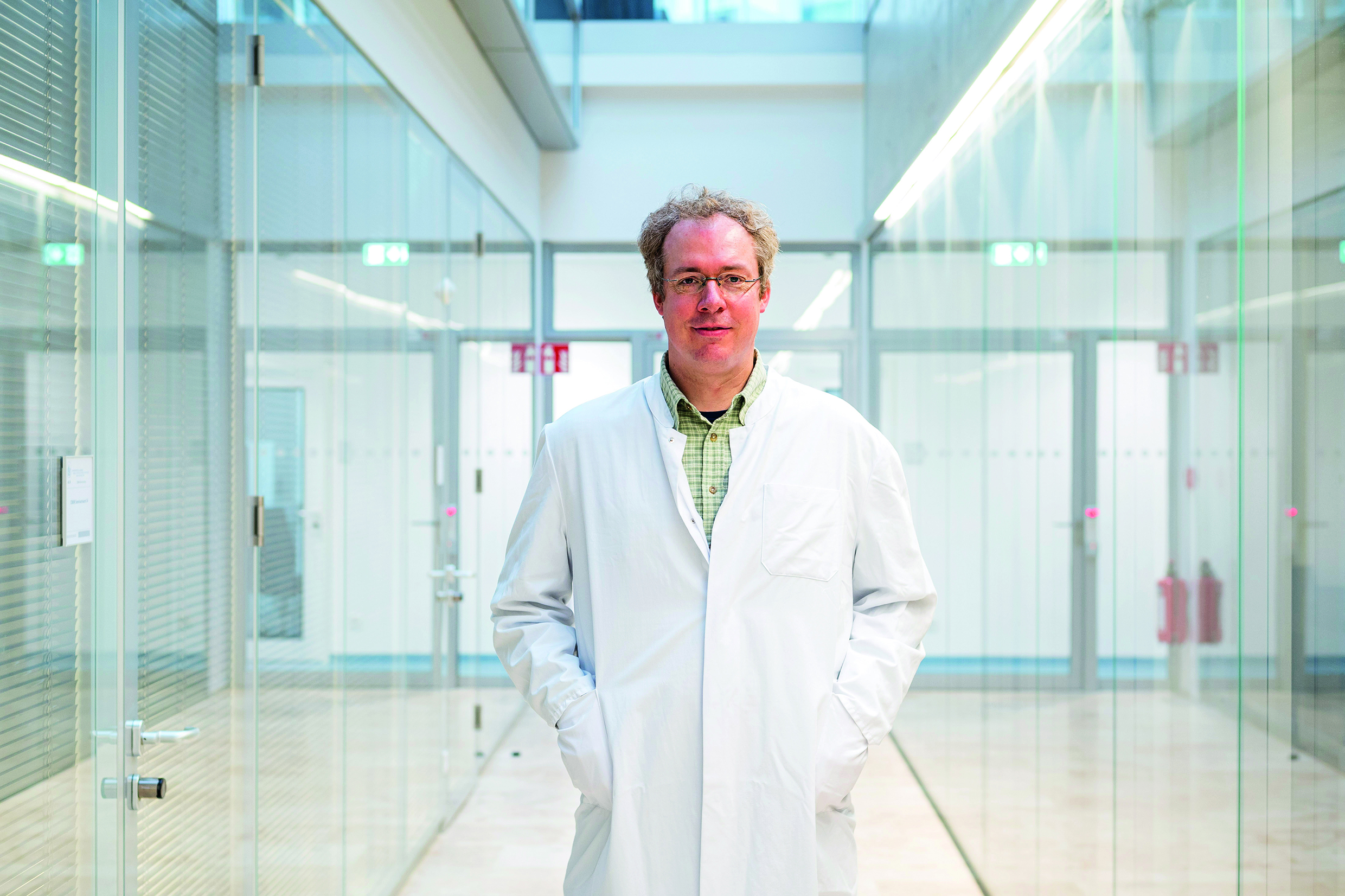Team including MHH and RESIST researchers has found starting point for therapy of diseases caused by herpes viruses

Prof. Dr. Thomas Krey; Copyright: Olaf Malzahn
05.11.2021
A research team from the University of Lübeck, Hannover Medical School (MHH), CSSB Hamburg and the RESIST Cluster of Excellence has found a possible new starting point for the therapy of diseases triggered by herpes viruses. This can be the case in particular with immunocompromised patients as a result of organ transplants or HIV infections. They have now been able to publish their results in the scientific journal PLOS Biology. They are based on results that were partially obtained at the MHH.
The starting point of the research is the icosahedral capsid, a small capsule regularly constructed from viral proteins, in which the DNA genome of the virus is packed for protection against environmental influences. This capsid consists of a solid protein layer and is impenetrable to nucleic acids. It must be passed through a unique portal channel both during the packaging of the genome for the purpose of forming new viruses and during "unpacking", i.e. the release of the genome during infection of a host cell. This is located at one of the 12 capsid corners and is closed there by a portal cap.
Decoded crystal structure enables understanding of infection processes
The researchers at the University of Lübeck have now succeeded in deciphering the crystal structure of a portal cap of the Kaposi's sarcoma herpesvirus, a γ-herpesvirus, produced in the laboratory. In addition, the researchers led by Prof. Dr. Thomas Krey from the Institute of Biochemistry at the University of Lübeck were able to elucidate how the structure of the corresponding protein looks in β-herpesviruses (such as the cytomegalovirus), which, despite obvious differences in capsid association, has a striking structural similarity to its α- and γ-herpesvirus counterparts.
"Despite the enormous progress that cryo-electron microscopy currently allows us to make in this line of research, it would have been difficult to better understand the processes taking place around the portal cap without our crystal structure, as the resolution in this area of the capsid is not sufficient for this," explains Thomas Krey.
In the study results now published, the researchers were able to prove that the portal cap protein (pORF19) also pentamerises in solution and provide insights into how pentamerisation might be triggered in infected cells. Furthermore, structure-based mutagenesis on the lateral contact sites of this pORF19 pentamer, resulting in a blockade of pentamerisation, revealed severely impaired production of infectious progeny.
It is these results that should now pave the way to a better understanding and more targeted treatment of diseases caused by herpes viruses.
SERVICE:
For further information, please contact Prof. Dr. Thomas Krey, krey@biochem.uni-luebeck.de, telephone (0451) 3101-3100.
The original paper "Assembly of infectious Kaposi’s sarcoma-associated herpesvirus progeny requires formation of a pORF19 pentamer" can be found here.